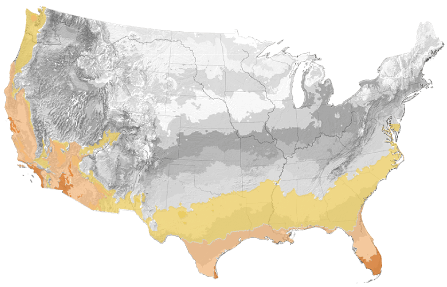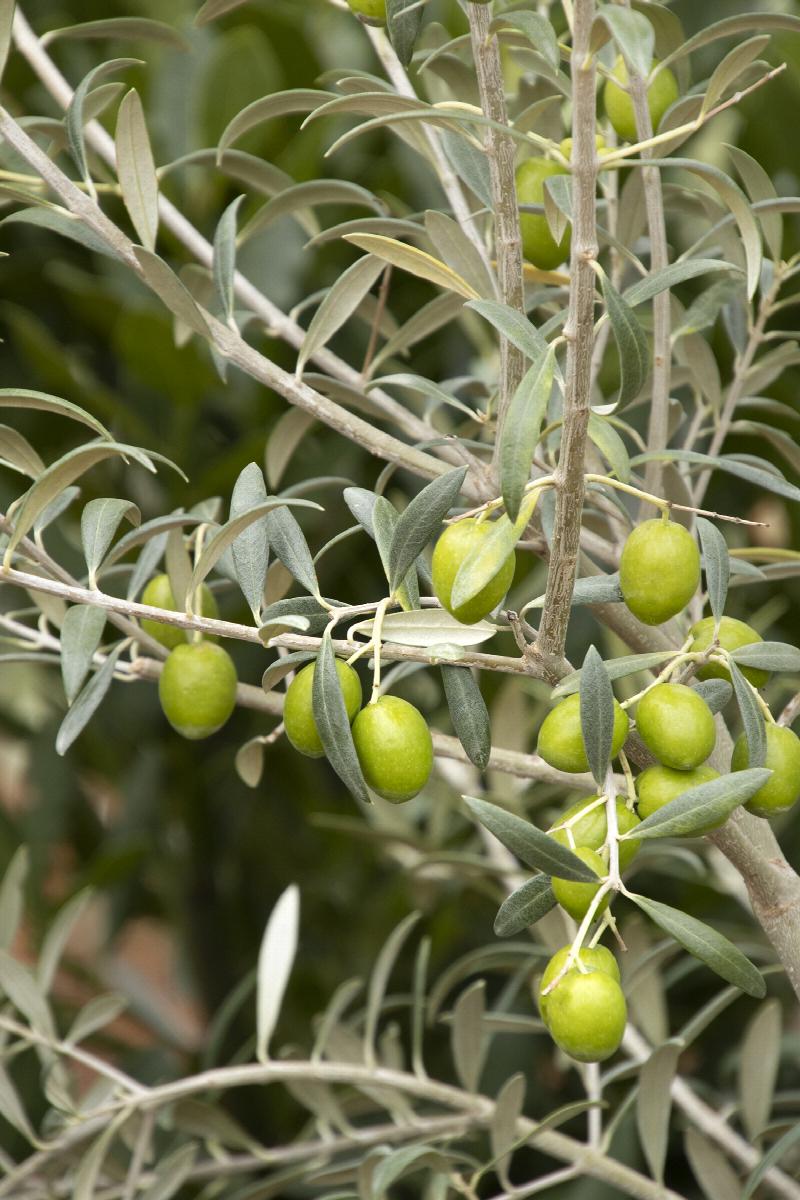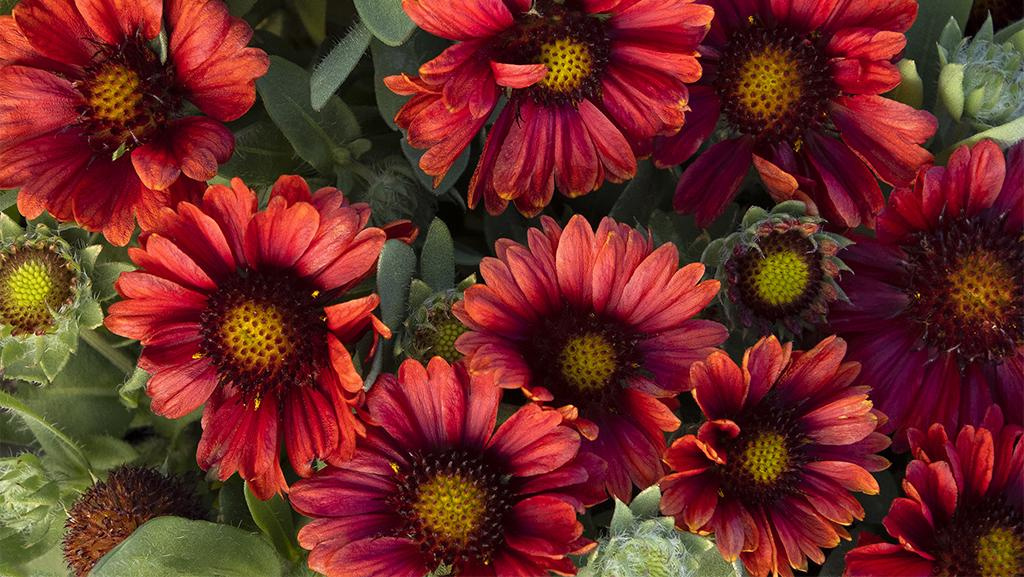Haas Improved Manzanillo Fruiting Olive
Olea europaea 'Haas Improved Manzanillo'
Pronunciation: OH-lee-a yoo-ROH-pee-ah
SKU #06008
| Description | A stately small landscape specimen, distinguished by its large spherical olives with smaller pits, yielding more flesh than the popular Manzanillo. Evergreen foliage is more finely textured, with dense, arching branches on a more compact, rounded form. Blooms and matures about a week earlier. Olives are useful stuffed, salted green, black, or for oil. |
|---|---|
| Light | Full sun |
| Watering | Once established, water if very dry. |
| Blooms | Late spring |
| Mature Size | Slowly reaches 15 to 20 ft. tall, 10 to 15 ft. wide. |
| Deciduous/Evergreen | Evergreen |
|---|---|
| Special Features | Dramatic Foliage Color, Easy Care, Waterwise, Edible, Compact Form |
| Problems/Solutions | Coastal Exposure, Deer Resistant |
| Growth Rate | Slow |
| Landscape Use | Container, Suitable for Topiary |
|---|---|
| Flower Color | White |
| Foliage Color | Gray-green |
| Companion Plants | Italian Cypress (Cupressus sempervirens); Pomegranate (Punica); Lavender (Lavandula); Chaste Tree (Vitex); Sea Lavender (Limonium); Rock Rose (Cistus) |
| Care | Thrives in average to lean, well-drained soils; tolerates high pH, poor soils. Water deeply, regularly in first few growing seasons to establish extensive root system. Once established in landscape, reduce frequency; heat and drought tolerant. Older trees are often more cold tolerant, to about 15 degrees F. Avoid pruning during periods of rainfall. |
|---|
| Lore | The name for the genus is derived from the Latin word for this plant 'oliva'. Known as the "olive of Seville", the most common variety of Spanish olive is Manzanillo, the classic small green olive often sold salted in Spanish markets. It is also ranked as the world's number one table olive. The Manzanillo variety was imported to the U.S. from Spain in the late 1800s. Fruit color ranges from absinthe green to various shades of red, to black depending on stage of harvest. The name is often misspelled as Manzanilla. |
|---|
This Plant's Growing Zones: 8-10

Your USDA Cold Hardiness Zone:
Your climate may be too cold for this plant
Buy Online
We cannot currently ship this product to your zip code.
From $155.00
Buy Locally
No Retailers found within 50 miles of your zipcode
About Us
We have been pioneers and craftsmen in the art of growing plants for nearly
100 years. Since our founding in Southern California by Harry E. Rosedale, Sr.
in 1926, we have been absolutely dedicated and obsessed with quality.
We have been pioneers and craftsmen in the art of growing plants for nearly 100 years. Since our founding in Southern California by Harry E. Rosedale, Sr. in 1926, we have been absolutely dedicated and obsessed with quality.

